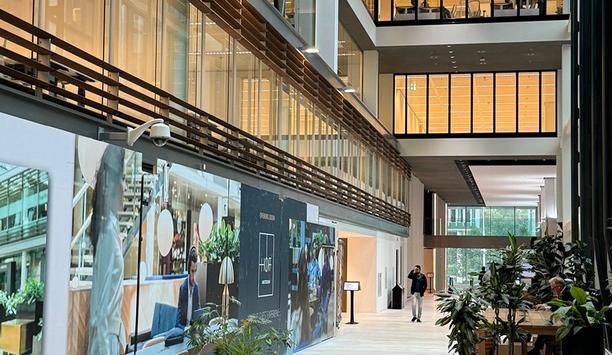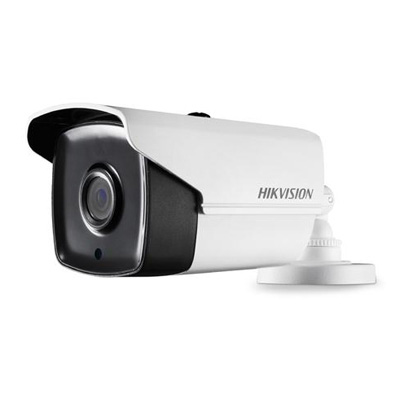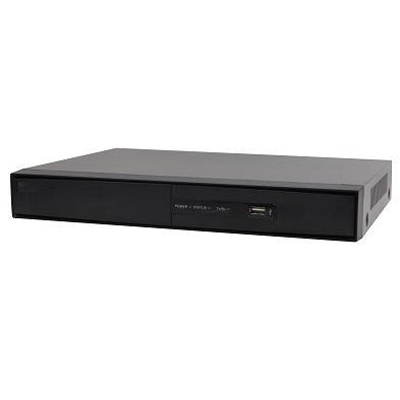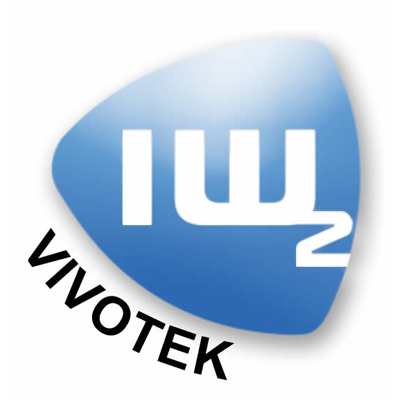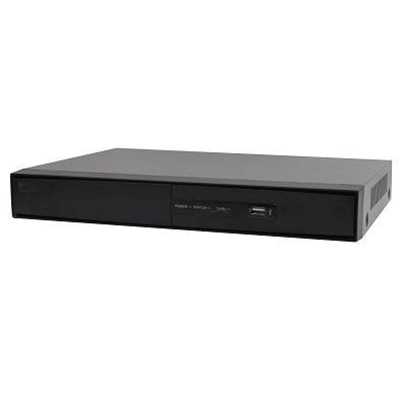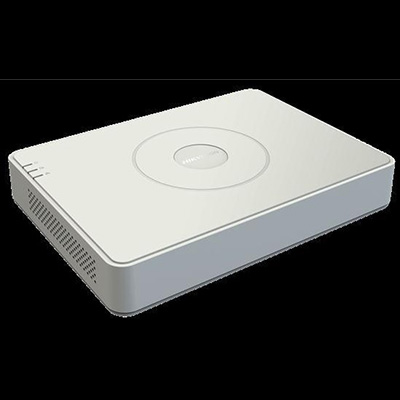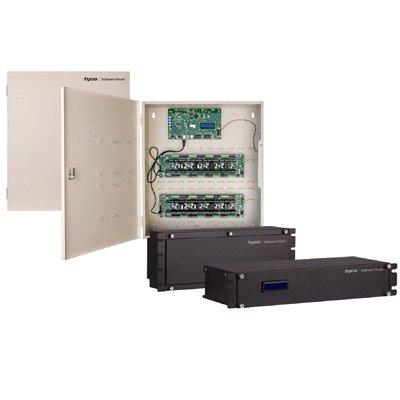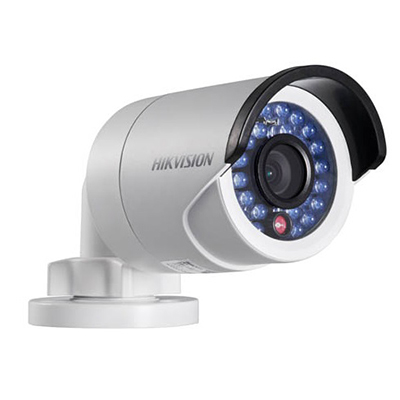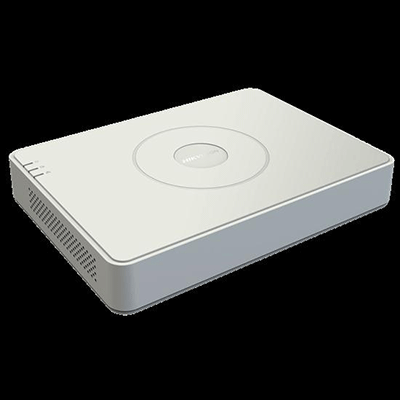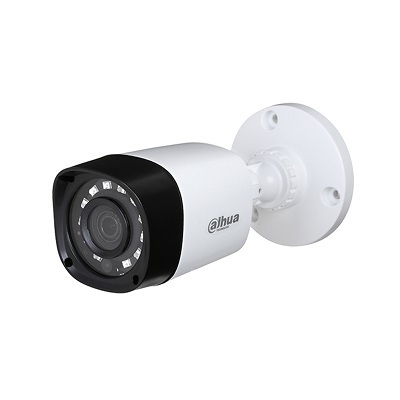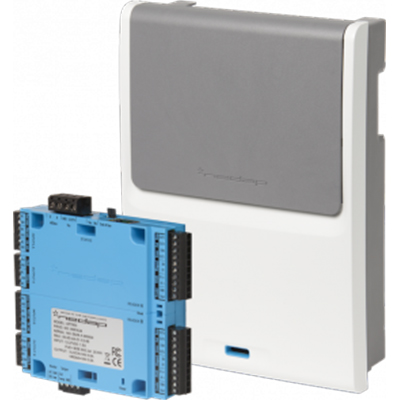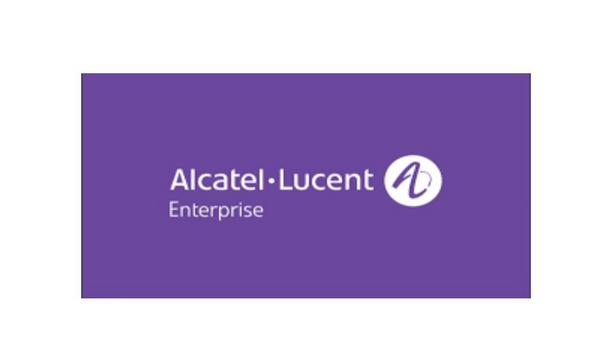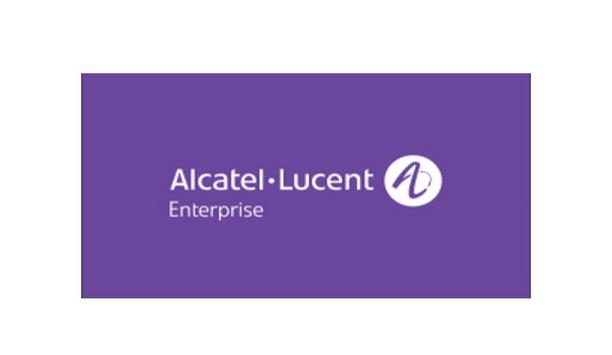Industrial & commercial security applications
In the fast-evolving landscape of intelligent manufacturing, Dahua Technology is shaping a new benchmark with its advanced innovation capabilities and efficient production models, creating a fully digitalised and automated smart manufacturing system. Dahua AIoT Industrial Park From being recognised with China’s “National Worker Pioneer” award last year to being named one of the country’s first “Excellence-level Smart Factories” this year, the Dahua AIoT Indu...
Dickensa 27, a modern residential complex in Warsaw, Poland, sought to enhance its security, communication, and convenience for residents through advanced intercom solutions. By implementing DNAKE’s smart intercom system, the building now features top-tier security integration, seamless communication, and an elevated user experience. With DNAKE, Dickensa 27 can offer its residents peace of mind and easy access control. DNAKE smart intercom system DNAKE smart intercom system w...
The global energy landscape is evolving at an unprecedented pace. With the increased adoption of renewable energy sources and the drive for a more sustainable future, the demand for efficient energy storage has never been greater. Enter Battery Energy Storage Systems (BESS)—the backbone of modern energy infrastructure, ensuring stability, resilience, and efficiency in power distribution. Record-breaking growth in storage In 2024, the US battery storage market saw record-breaking growth,...
World Trade Centre (WTC) Amsterdam is home to more than 300 companies. The commitment of its security team to providing a safe working environment in WTC’s fixed and flexible offices goes without saying. However, building managers wanted more from their access solution. More than just an office space, WTC Amsterdam has complementary onsite facilities, including childcare, a gym, physiotherapy clinic, bar/café, dry cleaning service and more. Modern digital solution Modern digital...
Based in Northern California, LYNX Logistics is a third-party logistics (3PL) company specialising in high-value assets. The company partners with the Transported Asset Protection Association (TAPA), aligning with TAPA’s global coalition of manufacturers, shippers, and carriers to protect every corner of their 96,000-square-foot mixed-use facilities, which encompass 8,500 rack and bulk pallet locations. Strategically headquartered near the Port of Oakland and Silicon Valley, it plans to e...
The Ampelmännchen (“little traffic light man”) from the former GDR is a cult figure around the globe. For tourists, the shops of AMPELMANN GmbH in Berlin are a big draw. Branches are spread over the entire city, and to reduce the burden of employee and staff key assignments, the company sought to optimise access rights management. At the same time, branch security needed to be state-of-the-art. The CLIQ® access control solution from ASSA ABLOY met all these requirement...
News
Sweden-based AP&T supplies production solutions to manufacturers worldwide, including automation, presses, furnace systems, and tooling, for the manufacturing of press-hardened vehicle parts for the automotive industry. Car manufacturers are using lighter sheet materials, such as aluminium and thinner steel, to form robust parts for car body frames. When pressed, these lighter materials still produce a strong body frame meeting required safety standards without adding unnecessary weight to a car’s build which can drain both fuel and battery life. Measure and monitor sheet materials AP&T needed a solution to measure and monitor sheet materials before and after pressing. It is necessary to guarantee even heat distribution from the furnace before the sheets are pressed, the exact placement of the sheets, and to ensure that there are no hot spots after the sheets were cooled in the press tool. If any of these three conditions is not met, the required mechanical properties of the safety-relevant components will not be reached. This causes rejected parts, wasted materials, and additional manufacturing time. Also, the press tool itself might be damaged. The IPHA System - Thermal imaging for non-contact temperature monitoring To save car manufacturers time and money by preventing defect-pressed parts, AP&T reached out to Swedish thermal imaging integrator Termisk. Termisk designed an Infrared Press Hardening Analysis (IPHA) vision system that can measure the three main factors affecting sheet pressing quality: temperature before and after pressing, and sheet placement in the press. Using Teledyne FLIR thermal imaging cameras mounted to the sides of press machines, the IPHA system measures the temperature of metal sheets using the Teledyne FLIR A70 smart sensor camera (previously A315) or Teledyne FLIR A615 camera depending on the required image quality. Accurately measuring heat distribution on shaped metal sheets The IPHA system features a Teledyne FLIR thermal imaging camera on each side of the press with wide-angle lenses. The setup ensures the temperature is measured accurately for the whole surface area of the 3D-shaped sheet material. The process is automated, so once pieces are inside the press, the press-line controller system signals to IPHA to take an image and analyse it. Once the positioning and temperature are determined as ok, a signal is sent back to the press line to proceed. High-resolution thermal images Similarly, it then measures the sheet temperature and inspects heat distribution after pressing, after the shaped part is cooled. Unless there are any issues or alarms raised, there is minimal interference needed from an operator. The high-resolution thermal images make it quick and easy to identify hot spots and measure the areas where the material has not reached the correct temperatures. The system makes tool pressing and changeovers quick and simple too. The software allows manufacturers to pre-set temperature analysis parameters for the different pressing tools used. This allows the IPHA system to re-configure quickly during changeovers. Accurate and flexible thermal imaging solutions Teledyne FLIR’s A70 image streaming camera is ideal for advanced condition monitoring. In this case, the Teledyne FLIR A70 is capable of monitoring the temperature and heat distribution on steel sheets, even with raised parts, using non-contact temperature sensors. The wide-area monitoring capabilities of the A70 cameras mean that two cameras: one on each side of the press is enough to monitor the large steel sheets. The cameras will alert operators to any issues so they can investigate and rectify them immediately to prevent wasted materials and additional production time. Teledyne FLIR A615 camera For sites that require higher thermal imaging quality, the Teledyne FLIR A615 camera is a powerful alternative to the A70 in IPHA. Offering the same non-contact temperature measurement, the A615 provides higher accuracy and can detect temperature differences even at long distances. Termisk has implemented at least 40 IPHA systems for pressed part manufacturer AP&T worldwide. The thermal imaging solution can be installed on new lines or retrofitted to existing lines.
Over the years, Dahua has continuously invested in the development and innovation of Full-colour technology to solve the monitoring challenges brought by low illumination. In 2018, the company launched the Starlight and Starlight+ technologies which enable cameras to effectively capture colour details in low-light environments. 24/7 colour monitoring Focusing on further improving low-light monitoring, Dahua officially released the Full-colour concept in 2020, realising 24/7 colour monitoring by introducing F1.0 super aperture, 1/1.8 '' high-performance sensor for large targets, and Dahua’s self-developed ISP 4.0 technology. The colour information of key targets in the scene can be captured even at night, which can be used as evidence in case of an investigation or backtracking. Dahua Full colour 2.0 technology Dahua TechMonth showcases some of the integrations of Full-colour technology for customers and end users In 2021, the company continued to upgrade its technology and launched the Dahua Full colour 2.0 technology. It further expanded the Full-colour “family” and integrated 4K, panoramic, zoom, and other technologies to facilitate the development of high-end products, provide a more comprehensive product system, and enhance low-light surveillance. To elaborate more about this remarkable technology, Dahua TechMonth showcases some of the integrations of Full-colour technology that create more business value for customers and end users. Recap of solutions Following is a short recap of these amazing solutions: Full-colour + TiOC The TiOC (three-in-one camera) has 3 main features: Smart Dual Illuminators, Active Deterrence, and AI. It can effectively warn off intruders with active deterrence, and notify users in time with real-time alarm, providing pro-active video surveillance to properties that require 24/7 security. TiOC utilises Full-colour technology to capture colour footage in dark scenarios. Also, its smart exposure technology realises time-sharing control and prevents the interference of flashing red & blue light in the image. To see TiOC in action, check out this video. Full-colour + Panoramic The Dahua Full-colour Dual Lens 180° Panoramic PTZ & IPC devices are equipped with dual sensors that deliver a 180-degree field of view. After the right and left lenses to capture an image, the camera calculates the feature values of the left and right images to avoid warping and pixel loss using standardised image correction technology. The Dahua advanced pixel-level metadata fusion algorithm then enables seamless splicing of the image, resulting in a seamless 180° wide-angle image. Panoramic IPC The Panoramic IPC offers EPTZ that provides a panoramic image of the scene, as well as sub-images that focus on specific areas or targets. For the panoramic PTZ camera, both panoramic and detailed views support AI functions and can be independently deployed in different directions to cover wider areas. Full-colour + ZOOM The motorised varifocal lens of the upgraded Dahua Full-colour 2.0 network cameras has approx. 5x optical zoom capability and auto-focus function, providing clear colour details of the monitored scene even after zooming in. With its long-distance illumination capability, the camera can also capture a clear full-coluor image even from far distances. Full-colour + 4K The Dahua Full-colour 4K camera delivers enhanced colour images and surveillance footage 24/7. It adopts a 1/1.2” image sensor (currently Dahua's best low-light IPC sensor) that provides a 110% pixel size increase compared to a common 8MP sensor. Its F1.0 large aperture can capture more available light and the maximum light energy that the sensor can receive is increased by 2 times. Success Case: Schwarze Berge Wildlife Park Located in Rosengarten Germany, the Schwarze Berge (Black Mountains) Wildlife Park covers an area of about 50 hectares. It is home to nearly a thousand of animals from approximately 100 species grazing in Europe. The administration of the park was looking for a comprehensive camera system that can perform many tasks. “We chose Dahua because it customised a complete solution to meet all our needs,” says Arne Vaubel, Managing Director of the Schwarze Berge (Black Mountains) Wildlife Park. Full-colour and thermal imaging In this project, a full series of innovative cameras equipped with key technologies" “In this project, a full series of innovative cameras equipped with key technologies, such as Full-colour and thermal imaging are adopted." "We are glad to see that through our cameras, the park can monitor the living environment and health status of wild animals at any moment without disturbing them, which also helps the park realise efficient operation and management,” explains Kai Wockenfuß, Pre-Sales Support Technical Engineer of Dahua Technology GmbH. Fixed-focal Warm LED Bullet WizMind Network Camera One notable Dahua camera deployed in the park is the 8MP Full-colour Fixed-focal Warm LED Bullet WizMind Network Camera. It is equipped with a high-performance sensor and large aperture lens, enabling it to capture clear colour images when it’s dark or during the night. With its photosensitivity technology, the camera can capture more available light and display more colourful footage of the monitored scene, providing 24/7 monitoring of the wildlife in the park. The future of Dahua Full-colour technology With the success of Dahua Full-colour in the market, what does the future holds for this amazing technology? For starters, minimising white light pollution is at the top of the list. Some cameras with full colour capabilities in the market still use white light, which can affect the human eye and cause severe light pollution in the monitored scene. Touchless Full-colour cameras are one solution that Dahua has been exploring through its multi-spectrum algorithm. The Dahua Multi Spectrum Fusion technology extracts the details and brightness of the visible spectrum and infrared spectrum to make the fusion brightness close to the visible light brightness, which then enables the camera to provide better images. AI integration Another aspect that Dahua is focusing on is the deeper integration of Full-colour with AI Another aspect that Dahua is focusing on is the deeper integration of Full-colour with AI. Full-colour technology is continuously being upgraded, and with that comes more intelligent solutions that can realise clear HD images at night, like it is during day time. The TiOC, for example, combines Full-colour, AI, and Active Deterrence (warning lights and siren) into one comprehensive solution, realising a closed-loop system that involves early warning, active deterrence, and backtracking. It has been recognised by many authoritative organisations in the industry and even received distinctive awards. Intelligent analysis and computing What’s more, with the constant development of this technology can enable Full-colour imaging to be directly applied to intelligent analysis and computing. It will become a mainstream technology that everyone can avail and use to optimise their scenarios, which is in line with Dahua’s mission of “Enabling a safer society, and smarter living.”
More than one million electric vehicles are registered in the U.S.—and they all have to plug in somewhere. As EV charging stations pop up across the country, one of the chief questions will be how charging station users are identified, authenticated, and connected with membership or payment systems. Radio-frequency identification cards and tokens and smartphone authentication apps have emerged as two viable options for EV charging authentication. Which is best? It may depend on the user base they plan to serve. User authentication for EV charging Most electric vehicle owners have a spot to plug in while at home, either in their own garage or carport or in a designated charging spot in a tenant parking garage. But electric vehicles also need spots to charge while owners are out and about. The EV charging market is broadly divided into two tiers: Level 2 charging stations, which operate at 208-240 V and use AC power. These stations will add 20-25 miles of range in about an hour of charging. The U.S. Department of Transportation listed more than 22,800 public Level 2 EV charging stations across the nation as of mid-2020. They are commonly found in public parking lots and garages, hotels, grocery stores, malls, and other commercial areas. They may also be installed in private parking garages and business parking lots for use by tenants, employees or fleet drivers. Collecting membership data Direct Current Fast Chargers (DCFS) are designed to charge an EV battery to about 80% in 20-30 minutes. There are currently about 15,000 DCFC stations across the U.S., but their numbers are expected to explode as more people start taking EVs on longer road trips. They are commonly found along major interstate highways. As the market evolves, user authentication requirements for EV charging stations are likely to vary by type, location, and user base. Some commercial locations may provide Level 2 EV charging as a free amenity to shoppers, guests or employees. If there is no charge for the service, there may be no need to authenticate users at all— people can simply park and plug at any available spot. However, there may be a benefit to collecting membership data (e.g., shopper reward club). Private charging stations Public, for-profit EV charging stations, like gas stations, need a method to collect payment for their services. In some cases (especially at roadside DCFS stations), users may simply pay for the minutes used with a credit card—just like at the gas station pump. However, many EV charging station users are already accustomed to identifying themselves with an RFID membership card or a smartphone app. Charging networks like ChargePoint and Blink enable members to access any EV charging station within their networks with a card or smartphone app, which connects to their membership, account, and payment information. Private charging stations—such as those offered to tenants, employees or fleet drivers—may not require payment but need to ensure that only authorised drivers are accessing power and taking up valuable parking spots. An RFID card or smartphone app can be used to identify authorised drivers and track charging behaviours. Moving forward, many EV charging stations may find that they need a mix of options for users, including membership cards, smartphone apps, and a credit card payment option for out-of-network drivers. Choosing between RFID and smartphone apps In the long run, the answer may be ‘both.’ RFID cards are economical and easy to issue When user identification and authentication are desirable, which is the better option: RFID cards or smartphone authentication? Both have their uses in the EV charging market. In the long run, the answer may be ‘both.’ RFID cards are economical and easy to issue. And for some users bases, they may not have to issue a new card at all—they can take advantage of an RFID card they already carry. In many cases, it is possible to leverage existing employee IDs and membership cards for access to privately controlled EV charging stations. RFID membership cards may be a good bet for: Fleet drivers who already carry an RFID card for vehicle access. Employee parking lots and garages where people already use a card for entry. EV charging parking spots at gyms or other locations where users want to limit charging access to active members. EV charging stations Most consumers would prefer not to have to carry a physical membership card for every retail outlet On the other hand, public charging stations may find that consumers would prefer to use a smartphone app rather than receive another membership card to carry in a physical wallet. Many consumers prefer to carry only their phone and one or two essential cards (such as a driver’s licence and a single credit or debit card). As more retailers enable consumers to pay via a digital wallet app on their smartphones, some don’t even carry a physical credit card anymore. Most consumers would prefer not to have to carry a physical membership card for every retail outlet they visit—and that includes EV charging stations. Smartphone apps for user authentication are simple to set up and highly secure. Instead of RFID, they typically use either Bluetooth® Low Energy (BLE) or Near-field Communication (NFC) protocols. Public charging stations For the user, the experience is almost identical to RFID authentication, except they wave a smartphone over the reader instead of a card. Apps have other user benefits, too. A custom app for EV charging can be configured to help users locate or reserve charging stations, check their balance and usage history, and change their payment options right on their phone. These features make smartphone authentication ideal for consumers These features make smartphone authentication ideal for consumers accessing a network of public charging stations. However, EV charging network managers should keep in mind that some users may still want a physical membership card. Smartphone-based authentication There are still some user populations, such as older consumers and those from lower income brackets, where smartphone ownership is not ubiquitous. If users are primarily using EV charging for a fleet vehicle, they may not want to download an application for work on their personal cell phone. Other users may find smartphone apps confusing or simply prefer to have a card for other reasons. The answer for both public EV charging networks and private charging station owners is to have an RFID reader that is capable of both card-based and smartphone-based authentication. This will provide maximum flexibility as user preferences change. Finding the right RFID reader for EV charging The ELATEC TWN4 MultiTech family of readers is ideal for authentication at EV charging stations The best RFID reader for EV charging is one that is flexible enough to meet the needs of all user populations and evolve as requirements change. The ELATEC TWN4 MultiTech family of readers is ideal for authentication at EV charging stations. The readers support 60+ RFID transponder technologies along with BLE and NFC smartphone authentication. This means that one reader can support all common technologies already in use across the entire user base—both nationally and internationally. This capability becomes important for applications where users want to enable drivers to use an existing RFID card (such as their employee or fleet ID card or an access card for a tenant parking garage) for access to charging locations. It also provides more flexibility as technologies or preferences change in the future. Supporting advanced encryption TWN4 MultiTech supports advanced encryption and security configurations for highly secure transactions between the card or smartphone and the reader. This is important for EV charging applications tied to payment or employee/driver identification. ELATEC readers are mobile-ready. The ELATEC Mobile Badge BLE NFC App offers simple and effective components for building or extending a mobile application for EV charging networks. Non-managed mobile credentialing using the ELATEC app is free. TWN4 MultiTech readers also work with multiple existing third-party managed credential systems, such as KleverKey, Safetrust, and Transact. The TWN4 MultiTech is easy to customise with the powerful Software Development Kit (DevPack) and App Blaster and Director utilities. Readers can be easily configured to support custom functionality (such as LED light flashing sequences or sounds for user feedback) and integration with backend software for easier member management. The DevPack tools make the TWN4 family the most powerful, versatile, and sustainable readers on the market. Hardware communication interfaces As electric vehicles move from niche to mainstream, EV charging infrastructure will need to grow and evolve to accommodate millions more drivers—both in the consumer market and in commercial fleets. With TWN4 MultiTech, EV charging station managers will be ready. Interested in learning more about technical considerations for RFID? Download 11 Considerations for Embedded System RFID Readers for additional advice, including operating power and consumption requirements, antenna placement, hardware communication interfaces, and more.
Integrated security manufacturer, TDSi has unveiled its enhanced, free-of-charge training offering, which includes an updated training facility, enhanced online booking system and a refreshed training syllabus, which focuses on its GARDiS ecosystem range. Jon Hooley, the Technical Support Manager at TDSi, commented “Over the last couple of years, much of our training has had to be conducted remotely online, but with the relaxation of social distancing rules earlier this year, we have had the perfect opportunity to further evolve and enhance our face-to-face training facilities.” Fully refurbished training facilities He adds, “Our fully refurbished and updated training facilities in Poole reflect the latest technology developments, with a firm focus on GARDiS as our flagship range of fully integrated web-enabled systems, their installation and integration with other systems.” With installers and end users upgrading from TDSi’s classic EXgarde security software solution to GARDiS, TDSi is catering for increased demand for further practical training on the flagship range. Along with TDSi’s headquarters in Poole, Dorset, United Kingdom (UK), it also offers training at its partner - Texecom’s state-of-the-art facility, located in Haslingden, Lancashire, in order to provide further choice on where to train geographically in the United Kingdom. With sessions taking place at both locations each month, TDSi’s training is highly flexible to the needs of those taking part. Revamped and fully wireless training room The sessions usually cater for six people to ensure an excellent one-to-one training experience" The revamped and fully wireless training room in Poole has been designed to provide the ideal training environment for TDSi’s Gold and Platinum-accredited partners, as Jon Hooley stated, “The majority of participants are security installers looking to enhance their knowledge and expertise in using TDSi’s integrated security systems.” Jon Hooley adds, “The sessions usually cater for six people to ensure an excellent one-to-one training experience. We do also offer bespoke paid-for options that are particularly well suited to larger groups, bespoke content requirements for end-users for example, along with an additional option of on-premises training if required.” New enhanced online booking system The new enhanced online booking system also makes the process quicker and easier, as Nick Mercer, the Marketing Manager at TDSi, commented “Bookings for the Approved Installer Training Course are now placed through the website and the whole booking process can be done in minutes.” Nick Mercer adds, “Installers registering their place will receive immediate confirmation, along with a digital ticket via email and bookings are easily managed for amends or cancellations. The platform also enables us to expand the training we offer, to include additional remote sessions, such as webinars and online training, in the future.” Well-equipped and dedicated training facility Reflecting upon TDSi’s enhanced training, Jon Hooley concludes, “While online training is invaluable, it can’t completely replace the hands-on experience and benefits of a well-equipped and dedicated training facility, and we are very excited to be welcoming our partners to the new training room.”
The Security Industry Association (SIA) announced a major milestone in its SIA OSDP Verified initiative that over 100 device models have been named OSDP Verified through the comprehensive programme, which validates device conformance to the SIA Open Supervised Device Protocol (OSDP) standard. SIA OSDP standard SIA OSDP standard is an access control communications protocol standard maintained by SIA to improve interoperability, add advanced functionalities, and support AES-128 encryption for security. Already in use by many leading manufacturers, the standard offers compliance with access control installations that require advanced security or are used in government per FIPS 201-3. SIA OSDP Verified list Buyers have the confidence that the products from the SIA OSDP Verified list have been third-party tested and performed Products that are OSDP Verified are displayed in the OSDP Verified Product List and can use the SIA OSDP Verified mark in their product marketing materials. With this milestone, security integrators, specifiers, and practitioners have a wider array of OSDP offerings to recommend, and buyers have the confidence products from the SIA OSDP Verified list have been third-party tested and performed within the requirements of the OSDP standard. Programme expansion “Since its launch in April 2020, the SIA OSDP Verified programme has tested and validated 115 products from 18 brands substantial progress in just a little over two years, highlighting the market need and success of the programme,” said Edison Shen, director of standards and technology at SIA. “The programme has also welcomed three international manufacturers, and we’re seeing growing interest in both domestic and international participation.” Authoritative source The establishment of the SIA OSDP Verified programme was a response to the growing adoption of OSDP in the industry The establishment of the SIA OSDP Verified programme was a response to the growing adoption of OSDP in the industry to provide an authoritative source of OSDP solutions and the market confusion for non-verified claims of product compliance with the OSDP standard. By becoming OSDP Verified and displaying the SIA OSDP Verified mark on their products, access control manufacturers can instill confidence in their customers that their devices have gone through rigorous testing as required by the OSDP standard. Benefits of SIA OSDP Verified Benefits of becoming SIA OSDP Verified include: An authoritative listing of OSDP solutions A consultative process that provides vendors with implementation and remediation guidance A lightweight, non-punitive programme with no annual membership fees Continuous access to open-source testing tools and community feedback that promotes device conformance through the product life cycle
The National Cyber Security Centre (NCSC) and SANS Institute have announced details of the third edition of CyberThreat - a technical and interactive Summit that will be hosted virtually and in person. The event, designed for technical professionals across the cybersecurity industry, will return on September 12th and 13th at the Park Plaza, Westminster Bridge in London, encouraging global knowledge sharing and expertise across defensive and offensive disciplines. CyberThreat Summit CyberThreat will feature keynote speeches on the latest online dangers to organisations and insights from industry spokespeople and cyber practitioners about how to defend against sophisticated cyber attacks. The event will include interactive elements for in-person attendees, such as large-scale Capture the Flags (CTF) and “hackathons” that run over the two days. Hands-on activities There will be a blend of technical talks and hands-on activities, covering both offensive and defensive techniques" As part of the event itinerary, there will be a blend of technical talks and hands-on activities, covering both offensive and defensive techniques, as well as opportunities to network with a wide range of peers. Joining information for registrants can be found on the SANS Institute page. Through a partnership with NCSC, 75 delegate places are available to public sector employees free of charge. New opportunities Paul Chichester, Director of Operations, NCSC said, “CyberThreat is a vital event for our technology community bringing together a broad range of practitioners to develop, challenge, and inspire each other, all with a laser focus on the threats we face and the techniques we can employ to counter them." “While society has pulled together recently, our increased reliance on technology has presented new opportunities to those with malicious intent and added to the challenges we face. I am delighted that we are once again in a position for the NCSC to play its role in this event.” Share and gain new cybersecurity skills The event is designed to address the cyber skills gap and enhance cyber talent by developing new talent" James Lyne, CTO, SANS said, “Cyber Threat provides a unique opportunity for practitioners from both government and the commercial world to share cybersecurity experiences and to acquire new technical skills and knowledge.” “The event is designed to address the cyber skills gap and enhance cyber talent by developing and enthusing both new and existing talent." Combating the threat James continues, “While the last two years have brought significant disruption to the world, technology and technologists have been instrumental in enabling the international response to the pandemic, and reducing the impact on our economies, our businesses, our educators, and our families.” “The threat landscape has continued to grow and evolve, but by sharing cutting edge techniques and new solutions to ongoing problems, we can learn to combat those threats together as a community.”


Expert commentary
A key characteristic of many successful companies is that good ideas come from everyone, not just specific departments or job titles. What one person sees as obvious may be questioned by someone else who is less familiar with the product or process. This simple interaction can spark a whole new, faster, and better approach. While valuing tradition is important, if someone uses the phrase “that’s how we’ve always done it,” it’s essential to analyse the process to ensure it remains optimal. Business conditions change rapidly, and what was considered a perfect process last week may need adjustments this week. Comprehensive approach to innovation This comprehensive approach to innovation fosters continuous improvement across all aspects of the organisation Innovation should permeate every level of an organisation, from product development and customer experience to sustainability practices and employee training. This comprehensive approach to innovation fosters continuous improvement across all aspects of the organisation, allowing companies to stay agile, competitive, and in tune with their customers' constantly evolving needs. Addressing real-world challenges At the heart of pervasive innovation in the security industry lies the development of smart products and solutions that address real-world challenges. This approach integrates advanced technologies to enhance security while improving user experience. For instance, the integration of mobile credentials, biometrics, real-time wireless locks, intelligent keys, and cloud-connected access control systems exemplifies how technology can streamline operations and provide users with seamless and secure access. Offering user-friendly solutions These advancements reflect a deep understanding of user needs and preferences, offering solutions that are not only secure but also convenient and user-friendly. A notable example is UniKey's Kēvo, the first Bluetooth-enabled touch-to-open smart lock, introduced in 2013. Developed in partnership with Kwikset, this innovative product allowed users to unlock doors simply by tapping the lock with a compatible smartphone. By continuously innovating across various aspects of security products and solutions, companies can ensure that their offerings remain relevant and effective in addressing the evolving challenges of the security landscape. Design-driven features Products designed for quick and straightforward installation reduce labor costs and minimise downtime Innovation extends beyond technology to encompass design-driven features that prioritise user convenience and satisfaction. For instance, ease of installation is a critical factor in the adoption of new door hardware. Products designed for quick and straightforward installation reduce labor costs and minimise downtime, making them more attractive to both installers and end users. For electronic locks, long-lasting battery performance is essential for minimising maintenance and ensuring reliability. Products with extended battery life reduce the frequency of replacements and enhance user confidence. Incorporating antimicrobial finishes into door hardware addresses growing concerns about hygiene and cleanliness. Taking hygiene a step further, touchless technology in door hardware minimises physical contact, reducing the potential for cross-contamination and enhancing user convenience. Sustainability initiatives Sustainability initiatives in door hardware have evolved from niche considerations to central pillars of modern product development, not least of which is the growing consumer demand for sustainable products, which is influencing purchasing decisions. According to a Nielsen report, 66% of global consumers are willing to spend more on a product if it comes from a sustainable brand, leading many companies to prioritise the use of recycled and recyclable materials in their products. Beyond material selection, manufacturers are also refining their production processes to minimise environmental impact. Finishing processes are evolving to use non-toxic and low-impact finishing methods, such as powder coating and physical vapor deposition. Energy-efficient door hardware Energy-efficient door hardware plays a significant role in the overall energy conservation of buildings Energy-efficient door hardware plays a significant role in the overall energy conservation of buildings. Properly designed door hardware can help maintain a building’s thermal envelope, reducing heating and cooling demands. For instance, the HID® Signo™ access control reader includes improved power supply technology and energy-saving features that ensure reduced energy consumption when the reader is in a resting state. Environmental Product Declarations To further demonstrate their commitment to sustainability, many manufacturers seek certifications validating their environmental efforts. Environmental Product Declarations (EPD) and Leadership in Energy and Environmental Design (LEED) certifications have become key indicators of a product’s environmental performance. An EPD provides detailed information about the environmental impact of a product throughout its lifecycle, aiding in the transparency that architects and builders require to make informed choices. Similarly, LEED certification emphasises energy savings and broad environmental priorities, including water efficiency, CO₂ emissions reduction, and improved indoor environmental quality. Customer service and training Innovation is also making great strides in the behind-the-scenes efforts of customer service and training. Predictive maintenance technologies are revolutionising how companies manage product performance and customer support. By utilising data analytics and IoT technologies, companies can offer maintenance alerts, remote diagnostics, and connected support services that anticipate issues and failures before they occur. This shift from reactive to predictive maintenance minimises service disruptions and enhances customer trust by ensuring products operate at optimal levels. Digital training initiatives Digital training initiatives equip employees and customers with the skills needed to utilise new technologies In parallel, digital training initiatives equip employees and customers with the skills needed to utilise new technologies in a cost-effective and accessible manner. Digital installer certification programs, learning portals, and customer enablement initiatives are all part of a comprehensive strategy to equip stakeholders with the knowledge and skills they need to succeed. By investing in comprehensive training programs, companies foster a culture of adaptability and competence, ensuring that customers can fully leverage technological advancements. This approach not only enhances operational efficiency but also strengthens customer relationships by empowering them with the knowledge to make informed decisions. Incremental improvements While groundbreaking innovations often capture headlines, it’s the steady, incremental improvements that consistently deliver real-world value. Companies can achieve sustained growth and success by focusing on continuous innovation across all facets of the organisation. This quiet progress, though less visible, is often more impactful as it builds a solid foundation for long-term achievement. In a world where change is the only constant, fostering a culture of pervasive innovation is the key to sustained relevance and growth.
Access control solutions will continue their evolution in 2025 as organisations assess and adapt to dynamic and increasingly dangerous threats. Trends to watch include the growing adoption of mobile access credentials and digital IDs, and the integration of digital and physical security and other technologies. Other ongoing trends include the integration of AI into access control solutions and the increasing adoption of contactless biometrics for enhanced convenience. New access control innovations As these trends gather momentum, they highlight the pivotal role access control systems play in combining security and convenience, every hour of every day. Organisations must strike the ideal balance between a secure environment and satisfying user experience if they are to meet increasingly vocal demands for both. Achieving this balance not only delivers the expected user experience but also delivers multi-layered threat protection while introducing exciting new access control innovations. Digital technologies and open standards Modern access control solutions deliver a faster pace of innovation and dramatically improved capabilities Modern access control solutions deliver a faster pace of innovation and dramatically improved capabilities as compared to what was possible in the past. The primary objective is no longer simply to secure places and assets so they are beyond the reach of the wrong people. Now it also must be as easy as possible for authorised individuals to enter a building or access digital assets. Mobile access credentials and digital IDs are increasingly a preferred solution for achieving this seamless and convenient access experience. Technology convergence is happening at a rapid pace and this convergence makes it possible to integrate digital and physical security with real-time location systems and other technologies. Together, these converged technologies provide multi-layered protection against both cyber and physical threats while also enabling valuable new capabilities. 2024 State of Physical Access Control Report As AI is increasingly incorporated into access-control solutions, we will see even more powerful ways to leverage access control data for analytics use cases. Almost 40% of respondents to our 2024 State of Physical Access Control Report said they were looking to do this. Equally consequential is the rise of fast, frictionless and easy contactless biometrics solutions in a wide range of applications including healthcare, where 32% of respondents to our recent 2024 State of Healthcare Security Report said their facilities have already implemented this technology for authentication. Looking at the broader marketplace, nearly one in four (23%) respondents to our 2024 State of Physical Access Control Report cited biometrics when asked to “name the top three trends shaping the wider access control industry in the near future.” Evolution of access control solutions As access control solutions become increasingly central to secure and convenient daily life, these and other trends will have an ongoing impact on all market sectors from healthcare and banking to the corporate real estate enterprise and business and college campuses. At the same time, those responsible for a facility’s digital and physical assets know that these trends – and security in general – will never be a static proposition. The only constant is change. Threats will never stop evolving, and those tasked with protecting organisations against these threats must never stand still. The evolution of access control solutions that we saw during 2024 will continue through 2025 and beyond, and organisations will need to remain thorough and vigilant as they address today’s ever-expanding attack surfaces and ever-evolving attack schemes.
A survey conducted by Blackhawk Network finds the average shopper plans to spend almost half of their holiday budget to buy gift cards this year versus only 39% in 2023. The global gift card market was valued at $1.3 billion USD in 2023, and it is projected to reach more than $5.2 billion USD by 2032. Fraud - a growing concern While gift cards continue to be top of mind for consumers for streamlined gifting, gift card fraud is a growing concern for consumers and businesses alike. According to the U.S. Department of Homeland Security’s Homeland Security Investigations (HSI) unit, gift card fraud, perpetrated by Chinese and other organised retail theft (ORT) rings, can be attributed to losses in the hundreds of millions of dollars globally, and is being used to fund other illicit crimes such as drug and human trafficking. The retailers implement procedures to mitigate attacks. Using data insights to detect emerging threats and identify hidden connections is among the ways retailers can protect the integrity of their gift card programs. How gift card fraud is manifested Typical physical gift card scheme involves purchasing items using stolen credit cards Gift card fraud occurs both at physical locations and online. A typical physical gift card scheme involves purchasing items using stolen credit cards and then returning the items for store credit or gift cards. While some stores have strict and well-enforced return policies to ensure that only customers entitled to refunds receive them, fraudsters employ fake tracking ID (FTID) tactics that focus on bypassing identification checks during returns, enabling them to return stolen merchandise or exploit refund policies. They use a combination of fake IDs and altered receipts or rely on lax return processes to achieve their goals. Once gift cards are obtained, criminals can sell them at a discount or use them for personal purchases, effectively converting stolen goods or false claims into untraceable funds. Tactics to convince consumers One tactic involves draining a gift card by obtaining the barcode, Card Verification Value (CVV) number, personal identification number (PIN), or activation code from beneath the slim cardboard packaging. Once they obtain the code(s) from physical cards, they reseal them, monitor online for consumers to buy and load the cards, then spend the balances before the consumers can. Some merchants have sought to combat this by keeping store-branded gift cards behind the checkout counter, handing them out after purchase. However, this approach can be costly and inconvenient for both retailers and customers, as it requires additional resources for in-store management and potentially slows the purchasing process. Other online tactics involve people who misrepresent themselves in a variety of phishing scams to convince consumers to purchase gift cards, then provide the card details to others who then drain the cards. Scammers tell the victim which gift card to buy (and where). They might say to put money on a card for an online store, a streaming service, or a specific retail store. These scammers often work as part of an organised crime network. Retailers leveraging open info, AI, to combat gift card fraud Retailers are empowered to improve the monitoring and analysis of gift card transaction patterns A growing number of retailers are leveraging publicly available (PAI) and hard-to-reach data and analytics to extract key insights that help fight various forms of gift card fraud and stay ahead of evolving fraud tactics. With such tools, retailers are empowered to improve the monitoring and analysis of gift card transaction patterns, identify anomalies, and implement proactive measures to prevent fraudulent activities before they can impact consumers and sales revenues. Retailers need this type of approach in their efforts to battle scammers, who continue to refine tactics for draining gift cards and committing other types of retail fraud. Beyond simply refining their techniques, fraudsters continue to advance their use of technology to commit their crimes. For example, cybercriminals also use bots to perform brute-force attacks on gift card websites. They are increasingly using AI to perpetrate gift card fraud. Leveraging Latest AI And LLMs Retailers need to continually upgrade their fraud-fighting strategies and technologies as well. They can lean into PAI and analytics, in conjunction with existing security operations and investigations, to safeguard the integrity of their gift card programs and demonstrate their commitment to customers, reinforcing brand trust. In addition to leveraging the latest versions of AI and large language models (LLMs), retailers can take advantage of open-source intelligence (OSINT). By leveraging PAI and difficult-to-obtain data with analytics, brands are using OSINT to more quickly seize on evolving threat patterns to recognise current and shifting fraud schemes and stay ahead of evolving fraud tactics. In this way, the AI operates as a resource multiplier, compiling and processing data at faster-than-human speeds, while enabling the ability to extract actionable insights at scale. Users can make more accurate and timely decisions. Retailers need to upgrade their fraud-fighting strategies and technologies. Safeguarding gift cards, customer trust, and brand integrity OSINT can inform retail security managers, loss prevention directors, fraud investigators, and others to help spot and deter gift card fraud. By using AI to detect patterns and anomalies, OSINT solutions can help fraud specialists spot patterns of suspicious activity that may indicate distinct instances of fraud. AI further helps fraud specialists identify members of ORT rings by uncovering hidden connections among seemingly unrelated individuals and transactions. The market for retail gift cards is large and continues to grow, and so too, is the gift card fraud threat. By adopting OSINT for fraud prevention, retailers can stay ahead of tech-savvy criminals, safeguarding gift card revenue streams, as well as customer trust and brand integrity.
Security beat
With the year 2025 stretched out before us, there are many techniques one could use to predict what will happen in the new year. You might analyse historical data and analyse future trends. Or you could try statistical or economic modelling. Or you could develop multiple scenarios based on various assumptions to explore potential outcomes. Or you could just check your email. At this time of year, my email is full of industry folks looking to predict what the future holds in 2025. Ranging from artificial intelligence (AI) to privacy, the retail market to drones, here is a sampling of forecasts for 2025 provided by various players in the security market, courtesy of my email messages. What’s Ahead for AI? From Faisal Pandit, VP & GM, Global Security Products, Johnson Controls (JCI): “The future of security operations includes customisable, scalable solutions where users can control if, when, and how they use AI to improve efficiency depending on the size and function of their organisation.” Says Kevin Woodworth, Vice President, Global Product Management, Intrusion, JCI: “Next year will see a growing focus from product developers on designing systems that streamline setup and configuration through increased AI integration. This reflects a broader trend of leveraging AI to simplify use and enhance adaptability as solutions evolve, rather simply employing it because it’s popular.” From Peter Evans, CEO of Xtract One Technologies: “AI algorithms will significantly advance in distinguishing between harmless, everyday items and potential threats. With this, we will see false alerts become even more rare.” Says JP Castellanos, Director of Threat Intelligence, Binary Defense: “Machine learning (ML)-powered anomaly detection will move beyond proof-of-concept to become mission-critical, enabling teams to uncover unknown threats and behavioural anomalies in real time – well before they escalate.” Evans of Xtract: “As AI becomes more advanced in threat detection, it will lead to more sophisticated protection of individual privacy. We can expect to see more AI techniques utilised for threat identification that do not capture personal data and are privacy-first.” Predictions on interoperability and compliance Woodworth of JCI: “New products added to singular systems must be interoperable. In 2025, organisations will need to embrace interoperability. AI will progress past reactive measures to achieve predictive capabilities.” Pandit of JCI: “With organisations increasing their focus on the regulatory environment, there will be an uptick in specialised certification programs to meet these needs. New security roles will emerge that will be focused on tracking and applying relevant regulatory changes.” Expanding capabilities for video cameras Woodworth of JCI: “Beyond capturing images, cameras will be able to detect potential threats and also mitigate them instantly, issuing vocal warnings, controlling access, or escalating issues without human intervention.” Looking ahead to retail developments Hansel Oh, Director of Product Marketing at Brivo: “Centralized, cloud-based security platforms will enhance credential management and monitor logistical operations to enable retailers to battle cargo theft.” Stephen Burd, Vice President, Essence Security: “With an increase in police response times, sophisticated crime, and smash and grabs, 2025 will see a huge demand for security solutions that go beyond simply notifying the police and will look to actively intervene and prevent damage or loss from occurring.” The role of drones and training Mary-Lou Smulders, CMO, Dedrone by Axon: “Drones will transition from being viewed as supplementary tools to becoming essential components of public safety operations. As departments recognise their effectiveness in various scenarios, the perception of drones will shift, and they will be integrated into core operational frameworks alongside traditional assets like patrol cars while replacing helicopters as a cost-effective and versatile alternative.” Erik Hohengasser, Electrical Technical Lead at NFPA: “As the skilled trades evolve, there will be an increasing demand for specialised and technical training. Predictive analytics, virtual simulations and hands-on experiential learning will become especially valuable due to allowing employees to gain real-world expertise in safe and controlled environments.”
In an emergency, information is pivotal. More information provides better understanding of an emergency and empowers potentially life-saving decision-making. Emergency response teams depend on information to guide their efforts and to deliver targeted assistance. On the front lines of emergency response are 911 and field responder agencies, which must direct reaction to life-or-death situations rapidly and efficiently. Historically, 911 operators had to respond based on very little information, perhaps just a voice on the phone or a location on their screen. Providing critical information Today, there are literally millions of information sources available, ranging from connected buildings to vehicle telematics to live video streams to health information from wearable devices. In fact, there are 540 million connected devices, any one of which could provide critical information in an emergency. But how can those information sources be leveraged to improve emergency response? That’s the mission and value proposition of RapidSOS, an ‘intelligent safety platform’ company that connects 911 operators with the vast universe of information available to promote better and faster emergency response. Highly sophisticated operation The platform is integrated into every major public safety software system and first responder agency “RapidSOS fuses human and artificial intelligence to put critical information from any connected device directly into the existing systems and operating procedures of first responders across the United States,” says Michael Martin, CEO of RapidSOS. RapidSOS is widely used by first responders. The platform is integrated into every major public safety software system and first responder agency. There are more than 4,600 software integrations that serve more than 21,000 first responders and 911 agencies. In 2023, RapidSOS supported the lifesaving work of public safety across 171 million emergencies with 3.3 billion data payloads. The system is adaptable and configurable to support any agency, from a highly sophisticated operation in New York City to a local sheriff running their own 911 center. Intelligent analytics and reporting RapidSOS Unite is the latest evolution of the product, a single solution that includes AI automation, rich content pathways, redundant connection to caller phones, and access to millions of connected devices. In an emergency, Unite intelligently fuses data from among millions of sensor feeds into a unified picture of an incident, allowing public safety officials to view real-time location, health profile, telematics, alarm data, and more. RapidSOS Unite is the latest evolution of the product, a single solution that includes AI automation RapidSOS offers core modules that handle call, text, video, sensor, mapping, and administration tools, and that provide partner data from connected devices. Additional modules provide enhanced geographic information system (GIS) data, and automated translation and transcription. There is also a single sign-on (SSO) upgrade, intelligent analytics and reporting, and seamless integration into field responder applications. Field responder applications Consider how an emergency might unfold and how RapidSOS can help. In a car accident, data from a modern automobile telematics system can alert a 911 operator of the accident as it happens. Data from a passenger’s wearable device might provide information about their health and condition. A nearby video or traffic camera could fill in details of how the accident occurred. Useful information in an emergency might come from any one of thousands of sources, including public safety data, sensor feeds, enterprise security systems, smart phones, etc. In a train derailment, electronic access to the cargo manifest can identify which train cars contain hazardous materials and how to manage the specific type of hazmat. This information could save valuable time when responding to incidents like the Feb. 3, 2023, Norfolk Southern train derailment involving 38 cars in East Palestine, Ohio. Consider how an emergency might unfold and how RapidSOS can help Institutional security partners Norfolk Southern is one of the companies that provides information to first responders using RapidSOS; in effect, the company provides a direct digital link from their rail security operations to any first responder in the United States. Amazon’s global operations centers also interface with RapidSOS to provide critical information to first responders. Partnering with corporate security helps to better support the flow of data from institutional security partners and their solutions. Information can transform and guide emergency responses. For example, in a structure fire, real-time sensor feeds throughout a building can help 911 and first responders understand how the fire is progressing. Real-time security camera footage Having access to live feeds can save lives as 911 provides pre-arrival instructions such as CPR Leading the way to providing video feeds from private camera systems to 911 operators is an agreement between Eagle Eye Networks and RapidSOS, which was announced in April 2024. The agreement allows an enterprise to opt-in to share real-time security camera footage from an Eagle Eye video stream during a live 911 call. Having access to live feeds can save lives as 911 provides pre-arrival instructions such as CPR. “Security cameras are crucial in many locations, including schools, but previously those cameras could not be accessed by 911 during an emergency but were only used for investigation after an incident,” says Martin. Improving fire and life safety systems RapidSOS is also integrated with Honeywell’s Connected Life Safety Services (CLSS) system, a cloud platform that combines software and hardware to improve fire and life safety systems. Technology integrations between the two companies further modernise and digitise the public safety communications process to provide faster, more accurate communications with emergency centers (i.e., 911 agencies). RapidSOS technology securely transmits detailed data about an emergency CLSS provides real-time visibility and connectivity to help systems integrators and facilities managers make informed decisions and manage fire systems more efficiently. When combined with Honeywell's solutions, RapidSOS technology securely transmits detailed data about an emergency, such as the type of hazard, severity, and location within the impacted building, to emergency response centers. Video object detection Rapid SOS’s emerging Harmony artificial intelligence (AI) product serves as a ‘co-pilot’ for 911 operators, helping them manage the high volume of emergencies by making their response more efficient. Harmony pulls all the sensor feeds in an emergency and works to make only the most important information available in the hands of 911 and first responders. Harmony can take key insights from text and video data, use ‘sentiment analysis’ to determine the emotion tone of a message, and help 911 professionals using language translation, keyword alerts and video object detection. Harmony can help local agencies as they address a 25% average staffing shortage by providing additional support to 911 professionals while lessening the workload. Harmony is also working to help RapidSOS expand the ecosystem, stitching more data together and quickly making it more actionable than ever. Emergency response system RapidSOS also interfaces with Iamresponding, a comprehensive end-to-end emergency response system for first responders in the fire and other emergency sectors. Iamresponding’s field responder application is used by RapidSOS to get information out to first responders in the field. More than 650,000 first responders use RapidSOS’s field application RapidSOS’s recent acquisition of Iamresponding helps the company improve the connection with the last mile “in-the-field” piece of the puzzle, ensuring partners across computer-aided dispatch (CAD), integrated applications, mobile data terminals, body cameras and other responders have access to critical data. More than 650,000 first responders use RapidSOS’s field application. Enhancing emergency response RapidSOS’s Safety Pioneer Program formalises the important partnership between RapidSOS and public safety agencies. Participants in the program receive early access to new platform features, contribute to the platform roadmap, and drive feedback to enhance emergency response. “911 and first responders do incredible lifesaving work,” says Martin. “Everything we have done and built at RapidSOS is a direct result of the engagement, partnerships, inside advice and insight we have gotten from public safety. We have learned from them, developed new technologies and tested them.” Martin adds: “Companies have data and we now know how to make that data actionable into the hands of 911 and first responders to save lives. This is an exciting moment for us continuing our mission in partnership with public safety, and for technology and security companies to have a major hand in that.” {##Poll1719488782 - What is the most valuable benefit of artificial intelligence (AI) in an emergency call center?##}
Security professionals are recognising the intelligence value of leveraging publicly and commercially available information. This information can now be accessed more effectively from typically hard-to-reach regions. Also, the technological capabilities have matured in our age of artificial intelligence, machine learning, and data science. Intelligence has historically been based on classified data. However, today’s unclassified data, including open-source intelligence (OSINT), is increasingly being used to provide context and queuing for other types of intelligence. Advanced identity intelligence Babel Street is a technology company providing advanced identity intelligence and risk operations using an AI-enabled data-to-knowledge platform to unlock insights from a flood of data. The company provides advanced data analytics and intelligence for the world’s most trusted government and commercial organisations. Experts have predicted that by 2025 over 463 exabytes of data will be generated each day globally The sheer volume of data is growing exponentially. Experts have predicted that by 2025 over 463 exabytes of data will be generated each day globally. Not only are we seeing exponential growth in the volume of data, but there is also disparity in the veracity and the variety of data. This is being compounded by the ‘app economy’ in which data is created in a new format for every app added around the globe. Human language technology “The problem is that the data ‘junk’ and the ‘crown jewels’ are in the same bucket, and government and commercial entities need better and faster ways to extract intelligence from these torrents of data,” says Farid Moussa, VP, Strategy & Public Sector, Babel Street. Prior to joining Babel Street, Farid retired from the National Security Agency (NSA). He has guided video, image, speech, and text analytics (VISTA) and developed an appreciation for human language technology. An elusive source of data is the Dark Web, where every user, by design, is attempting to obfuscate their identity, and bad actors are hiding much better. “This presents a cat and mouse game – the cat must be smarter than the mouse, but the mouse is continually getting smarter,” says Moussa. Intelligence tools for data analysis SIGINT and HUMINT – while both vital – are also the most expensive forms of intelligence There are several intelligence tools for analysing data. One of them is signals intelligence (SIGINT), which refers to electronic transmissions collected by ships, planes, ground sites, or satellites. Another is human intelligence (HUMINT), which is collected in a human-to-human fashion. Open-source intelligence (OSINT) is obtained by searching on topics or entities of interest that are publicly available on the Internet at large. Today, these various categories are often done in ‘silos of excellence.’ However, the best practice is using all forms together in a holistic fashion. SIGINT and HUMINT – while both vital – are also the most expensive forms of intelligence, while OSINT, which is growing in importance, is most cost-effective. All are vital forms of intelligence; OSINT is complementary and crucial to holistic intelligence practices. Holistic intelligence practices When it comes to physical security of people and places, OSINT has become a critical source of actionable information. Security directors leverage Publicly Available Information (PAI) to safeguard against threats to individuals, property, travel routes, and event sites. By monitoring PAI, security teams can detect and respond to potential dangers, including during and after events where thorough preparation is vital. Online information can contain warning signs of impending threats. It informs security professionals in uncovering digital traces, confirming intentions, and addressing risks across language barriers, ensuring proactive risk management for the protection of people and property. Role of Natural Language Processing (NLP) The Internet and social media were mostly English language by default, but that has changed exponentially Natural Language Processing (NLP) is a crucial capability that has evolved to recognise the richness and variety of words and names in multiple languages and scripts, and their use across cultures. Using machine learning and linguistics algorithms, the technology simultaneously considers numerous types of name variations. At one time, the Internet and social media were mostly English language by default, but that has changed exponentially. Babel Street’s world-class entity matching technology measures over 100 features to calculate the similarity of entities across multiple languages. Despite advances in data management and the cloud, there are still multiple challenges and complexities with integration of these data elements. Challenges include spelling variances/phonetics, language translation issues, criminal evasion, human error upon input, typos, etc. Accessing data from a scattered landscape While there have been advancements in cloud technologies, agencies utilising open-source data are typically working within a highly scattered data landscape and must use a wide array of tools to get at the relevant pieces. This fragmentation makes it difficult to run analytics and apply AI and machine learning at scale in order to derive actionable insights. Unstructured and relationship data are visualised through advanced link analysis As with many disciplines, artificial intelligence (AI) is changing the game when it comes to intelligence. NLP and AI algorithms are employed to enhance datasets for greater quality, usability, and completeness. Unstructured and relationship data are visualised through advanced link analysis, geographic heat maps, influential entity carousels, topic clouds, and patterns by time and day. Geographic heat maps The advanced algorithms accurately score and prioritise critical entities within the relationship network while providing the citations from which an AI/ML-based decision was made. “With the democratisation of AI, the world is becoming flat,” says Moussa. “Just like the most prosperous countries, even the poorest countries have the most advanced capabilities to do damage. Third-world economies often present a scenario where the financial gain of nefarious schemes and low-to-no regulation combine to incentivise bad actors.” The Challenges of Name Matching Identity has been an ongoing challenge for intelligence analysis due to the vast complexity of linguistics, spelling and cultural variances, human error, as well as human evasion. Technology and data science approaches are maturing, however machine translation can still struggle with meaning. The best-of-breed natural language processing capabilities run against the data while it still is in its native language. This minimises the occurrence of analytic errors caused by inaccurate machine translations. This minimises the occurrence of analytic errors caused by inaccurate machine translations It’s tempting to think that name matching is like doing a keyword search. The complexity of language makes it more challenging. New names are constantly created, with multiple spellings and no set of rules to encompass how names are formed. They are variable across languages, scripts, cultures, and ethnicities. Culturally specific nicknames and aliases add to the complexity. Replacing human involvement The investigation of the Boston Marathon Bombing in 2013 spotlighted an example of the significance of intelligence analysis. Even though the FBI had issued a detain alert for Tamerlan Tsarnaev back in 2011, Tsarnaev managed to travel to Russia in January 2012; and in July 2012, he returned to Boston. He was not detained on either occasion because there were too many names on the lists, and Tsarnaev’s last name had been spelled differently from the way it was on travel documents, thus enabling him to get through security. With the Internet, social media, and the dark web, there’s been an exponential increase in public communications in various languages, adding significantly to the amount of analysis required to keep societies safe. Name matching, using AI, analyses multiple contextual data points across languages to arrive at matches. Name matching, using AI, analyzes multiple contextual data points across languages to arrive at matches A common misconception is that this technology will replace human intelligence. “It’s more accurate to recognise its role as a force-multiplier, allowing humans to focus on the on the harder problems and/or vetting the results of AI,” says Moussa. “The technology can efficiently analyse massive volumes of data and distill it into actionable information in a timely manner. It augments human capabilities, enabling analysis at speed and scale beyond human capacity, without replacing human involvement.” Commercial Technology to the rescue “When it comes to threat and identity intelligence, we face a risk-confidence gap, underscored by the challenge of integrating traditional tactics with the modern digital landscape,” adds Moussa. “We cannot ‘hire’ our way out of this problem. Instead, it is imperative that we adopt technology to scale our efforts and free humans to solve the harder problems that machines cannot solve yet.” The public sector loves to build things, but there are time-to-value and return-on-investment considerations to the ‘build or buy’ decision. When commercial technology can be leveraged by government, it frees resources up to work on problems that the commercial world hasn’t yet figured out, says Moussa. “The public and private sectors need to come together – one team, one nation, working together with mutual trust and collaboration,” he says.
Case studies
The Middle East has recently expanded its real estate market as the region's economy grows and urbanisation accelerates. This trend has led to an increasing demand for smart security, and the pace of digital intelligence change is gradually increasing. The security industry in the Middle East is rapidly growing, driven by the government's strong emphasis on national security and terrorism prevention. Centralised systems management Significant attention and investment have been directed toward this sector, estimated to grow at about 10% per year. There is no doubt that the Middle East has become one of the most important and fastest-growing security markets in the world. While traditional real estate management requires a location-based approach, the digital transformation of the marketplace means that centralised systems management will replace the traditional approach, and that's exactly what Provis is starting to think about. The customer Provis is a property management company based in the United Arab Emirates (UAE) Provis is a property management company based in the United Arab Emirates (UAE). With over 25,000 units under property management, over 28,000 units under Owners’ Association management, and thousands of properties sold and leased. Based on their accumulated in-depth industry knowledge, and technical expertise, it is their commitment to provide sustainable value-added services through the assets of their clients. Integrated service solutions To provide integrated service solutions based on international standards, allowing clients to focus on their core business with peace of mind, thereby setting a new benchmark for integrated real estate service solutions globally. For its owners to centrally manage their users and deliver smarter, easier real estate solutions to their customers, Provis turned to Anviz's integrator partners, PROGRESS SECURITY & SAFETY SYSTEMS and MEDC, for assistance. The challenge The company's business continues to grow and expand across various regions of the country Traditional property management in the UAE local area is inefficient and intensive, property managers need to spend a lot of time and energy to manually deal with those complicated and repetitive work. Conventional management is unable to effectively analyse a large amount of data, making it difficult to provide a basis for decision-making. Impact on user experience The delay and errors of manual processing are the very drawbacks that can be precisely removed in information management. Moreover, as the company's business continues to grow and expand across various regions of the country, the practice of processing information in a decentralised manner by location not only tends to create information silos, making it difficult to integrate and share data but also leads to delays in customer service due to lack of information exchange, thereby affecting user experience and the corporate image. The solution Thinking about the cut-and-dry and providing a heartfelt service Face Deep 3 maximises supports up to 10,000 dynamic face databases and quickly identifies users within 2 metres No matter whether in the youthful campus or orderly government and other places, there will be the movement of people. Quickly and accurately checking people is a basic requirement for front-end devices, and their Face Deep 3 maximises this need. It supports up to 10,000 dynamic face databases and quickly identifies users within 2 metres (6.5 feet) in less than 0.3 seconds, with customised alerts and various reports. The Account Manager of Provis said, "In the past, we always struggled with the data integration of multi-point control. Having used terminal devices and software that were not part of a single system, we found that it had no linkage effect and could not solve the problem of event recording and data sharing. And location-based time and attendance solutions were ineffective in centralising user management." Perspective of the CrossChex system Based on the scenario of property management, the personnel are scanned and inspected by Face Deep 3 and then redirected to the management department through the CrossChex application and CrossChex Cloud Web software to achieve data sharing and transfer. Thus, the workflow of the property personnel is streamlined and standardised. Efficiency and cost management CrossChex system integrates the property work content in an all-round and multi-dimensional way From the perspective of the CrossChex system, it integrates the property work content in an all-round and multi-dimensional way, which makes property management more scientific and orderly, improves management efficiency, and reduces cost. Meanwhile, the CrossChex system adopts a centralised management approach to gather all the information resources on a single platform. It also supports integration with ERP solutions to facilitate integrated management, which can reduce manpower and improve efficiency. The benefits Precision management, digital intelligence service CrossChex Cloud, as a software platform with customised functions based on customer scenarios, combined with Face Deep 3, which is embedded with the most updated technological algorithms, seamlessly handles the data of people's movements and promptly processes the event records to form multi-form visualisation reports. Additionally, it supports business customisation and expansion to meet different business needs. It provides safe and reliable data encryption and rights management to protect user information security. Client’s quote Provis' Project Manager said, "Choosing to use Anviz's time attendance devices and cloud-based platform, allowed us to solve 89% of the repetitive steps for our owners' property management matters, making our brand image more visible."
About a year and a half ago, Peter de Jong introduced Dahua to Fred Koks, General Manager of KITT Engineering. Since then, Dahua, KITT Engineering and Ocean Outdoor have completed five joint projects together. Follow-up appointments for the next two projects are already scheduled. "Let's see what happens," was Fred's reaction when introduced to Dahua. ''We evaluate our portfolio with suppliers every year,'' he explained. “We have to. So much is changing and new technology is developing incredibly fast. You have to keep up.” He knows better than anyone how mobile the market is. “Among suppliers of LED screens, there is a constant battle for market position and new technology. We all know the big providers and the market leaders. But it is not necessarily that they are also at the forefront of technology.” Indoor shopping centre But the initial learnings and experience with the screen were very good before we started" Erwin van Domselaar, Operations & Project Manager at Ocean Outdoor, says his company dares to blindly trust the expertise of Koks and his people when choosing a particular type of LED screen. "KITT Engineering is our technical supplier. They are very good at distinguishing good products from bad products, and we trust them completely on this. When they have a product they see a future in, they discuss it with us to see if we can take on a project together with it." In Dahua's case, that first project is a screen in a shopping centre called Koperwiek – an indoor shopping centre with more than a hundred fashion-related shops – located in Capelle aan den Ijssel. "That was a relatively small project," Erwin recalls. "The screen was not too big. But the initial learnings and experience with the screen were very good before we started. And the installation itself went off without a hitch. Exactly what we expected from this product." Not regarding the screen, but its coincidence with the renovation of the shopping centre Very pleasant cooperation Soon, a second project was launched. This time in a shopping centre called Sterrenburg in Dordrecht. "Here, not everything went smoothly right away. Not regarding the screen, but its coincidence with the renovation of the shopping centre.” “They had actually just finished. All the walls had been neatly plastered and at that moment we asked if a new cable could be drawn. Fortunately, all this was eventually dealt with and solved in a very pleasant cooperation with the project developer, but it took some time." We are always looking for something new and surprising Pure craftsmanship The third and fourth projects are true masterpieces. In Hoofddorp, KITT Engineering installed a corner screen. "A unique screen for us," says Erwin. "It is the first screen that goes around a corner. It is half a meter that goes around the corner, fitting in super nicely with the surroundings. On paper, a huge screen of forty square meters, but when you stand there, you don't notice it because it blends in so well with the surroundings. We are always looking for something new and surprising. And a screen that turns around the corner offers a lot of new possibilities. For example, in terms of 3D content." Trying various techniques The screen doesn't just go around the corner, it goes around the corner seamlessly" Fred adds: "The screen doesn't just go around the corner, it goes around the corner seamlessly. KITT is always trying to bring novelties forward so we've had corner screens before. But that was in art projects and things like that where requirements are a lot lower.” “In the process, we were able to try out various techniques and we also found out that the products we had at our disposal at that time were not one hundred percent ready. Then Dahua came up with a prototype, we were very pleased with the 'cold corner' as we call it. It is really LED on LED, without a seam." Making image seamless To understand how clever this feat of engineering is, it's worth realising that the margin you have to make the image seamless is the space between two LEDs. Millimeter work, on a length of ten by five meters. "The fourth project was placing a screen in the atrium of Zuidplein shopping centre in RoFerdam," Peter says. "The screen was placed against a glass elevator. When you see that, [it is] not normal the way it came together. You don't see a cable or anything. Really fantastic." For instance, it prevents the light intensity from being too high Monitoring primary system The fifth project collaboration between Dahua, KITT Engineering and Ocean Outdoor is a LED display screen in Westfield Mall of the Netherlands. Something that can have major consequences in outdoor advertising In addition to the regular LED screen and the driving system, a screen control and monitoring system was also developed to monitor the primary system at every point. “We want to see remotely how our assets in the country are doing," Fred explains. From the video player to dysfunctional LEDs, everything can be monitored remotely. For instance, it prevents the light intensity from being too high. Something that can have major consequences in outdoor advertising.
The Honourable Society of Lincoln’s Inn is one of the four Inns of Court and operates as an active and thriving society of lawyers, sprawling across 11 acres in central London and dating as far back as 1422. The title of “Lincoln’s Inn” refers both to the Society and the location, which houses the Society’s facilities, numerous barristers’ chambers, and several solicitors’ offices. Inns of Court The Inns of Court originally provided accommodation for law students who learned their craft by attending court. Currently, the Inns exist to aid students in pursuing the legal profession and serve as landlords, and custodians of historic buildings, banqueting and events venues, and tourist attractions. To fulfill these many functions, Lincoln’s Inn required security that would meet their high standards while protecting buildings that had been in continuous operation for centuries. Need for a key tracking system The Inn not only provides services to law students but also operates as an attraction and a hosting venue As the Inn not only provides services to law students, but also operates as an attraction and a hosting venue, many different levels of security need to be in place for a variety of users, full-time employees, temporary contractors, event staff, students, and others. For this reason, Lincoln’s Inn needed to have a comprehensive system to track and monitor the many keys for the extensive venue. Challenges due to manual management For some time, keys at Lincoln’s Inn were managed manually through an analogue system, with staff retrieving keys from an open cabinet and recording key usage with pen and paper. However, because at times manual recordkeeping can be less than diligent, this allowed for confusion as to who had what keys and when and made it possible for keys to be stashed away or used by unauthorised persons. KeyWatcher Touch key control KeyWatcher Touch provides us with a fully secure means of key storage and management" With the variety and quantity of people moving throughout Lincoln’s Inn on any given day, a more secure solution was needed. To update and improve key control, Chief Porter Nicholas Bracey turned to the KeyWatcher Touch key control system by Morse Watchmans. “KeyWatcher Touch provides us with a fully secure means of key storage and management. We considered several products on the market and found the Morse Watchmans solution to be the most flexible and easy-to-use system,” said Mr. Bracey. Installation of two key units “The high quality and ease of scalability were two of the top features we required, and the KeyWatcher Touch was a perfect fit for our key control needs.” Lincoln’s Inn installed two KeyWatcher Touch units configured for a total of 192 keys or keyrings in January 2016, and the system has been in daily use since the installation. It utilises the Inn’s IT network and is fully integrated with the PCs in the security office and the office of Chief Porter to provide maximum flexibility and ease of use. KeyWatcher software Tracking keys as they were removed and returned was a top concern, so the ability of the KeyWatcher to record who has removed what key and when was exceptionally important. “The keys are always secure, rather than being openly accessible to staff. There is no longer paperwork to be managed for logging, it is all taken care of with the KeyWatcher software,” continued Mr. Bracey. Easy and accurate management KeyWatcher Touch has provided Lincoln’s Inn with the functionality and security it requires to easily manage its 192 keys “Audits and reports are fast and accurate, and it has led to our staff becoming more responsible overall.” KeyWatcher Touch has provided Lincoln’s Inn with the functionality and security it requires to easily manage its 192 keys, while also providing an easily accessible audit trail. In addition, the system has proven hardy and resilient in daily use over two years. Exceptional service “We have had continuity with Morse Watchmans since day one,” finished Mr. Bracey. “Demonstrations of function, installation, and training were all handled almost entirely by the same representative, in addition to subsequent orders." "The continuously exceptional service has ensured that we were getting exactly the product that would best serve Lincoln’s Inn and provide us with the security we need.”
Security office in commercial and residential building requires state-of-the-art solutions that can keep up with the demands of modern surveillance and threat detection. With space-efficient design, high-performance processing, coupled with advanced data protection, NVR NViS 5704, a powerful video analytics solution, enable seamless surveillance operations and enhanced security measure in edge AI applications. These capabilities empower security office to efficiently monitor and analyse video streams, identifying potential threats and recognising objects or individuals of interest in real-time. Optimal Space Utilisation The NVR NViS 5704 boasts a compact 1U form factor with rack depth only 56cm, making it an ideal choice for security office with limited space. Its space-efficient design ensures seamless integration into existing infrastructure without compromising on performance. At the heart of the NVR NViS 5704 lies the 13th Gen Intel® Core™ Processor with Performance Hybrid Architecture, delivering up to 16 cores, including a balance of performance cores for intensive tasks and efficient cores for power optimisation. NViS 5704 also features a PCIe x16 expansion with the flexibility to integrate accelerator cards or powerful graphics cards. This groundbreaking processing power and accelerator card support enable edge AI applications in video analytics, such as face/motion detection, object recognition, ensuring enhanced surveillance capabilities and efficient decision-making. Fortified data protection and backup Data security is of utmost importance in commercial and residential building security operations Data security is of utmost importance in commercial and residential building security operations. The NViS 5704 comes equipped with TPM2.0 and Bitlocker drive encryption, providing robust data protection to safeguard sensitive information from unauthorised access and potential threats, especially when hard disk is lost or stolen. In addition, Intel RAID technology is utilised for secure data backup. With RAID D 0, 1, 5, 10 support, critical data can be mirrored or distributed across multiple drives, ensuring data redundancy and protection against data loss. The NVR NViS 5704 offers an unparalleled blend of power, flexibility, and security, delivering a comprehensive solution for these mission-critical environments, With its accelerator card support, advanced Intel® Core™ processors, and enhanced data protection features, the NViS 5704 empowers security professionals to stay one step ahead in their efforts to safeguard communities and assets. Safeguarding communities and assets Main Features of NVR NViS 5704 are as follows: System 1U Rackmount 12/13th Gen Intel® Core-i platform DDR4 up to 64GB HDD 4-Bays 3.5” (support RAID 0,1,5,10) 1 x NVME SSD, 1 x M.2 2242 SATA SSD Display DP1.4, 1 x HDMI 2.0b, 1 x HDMI 1.4 2 x 2.5GbE Intel® Ethernet Audio in/out/Mic PCIe x16
Makita, one of the world's renowned manufacturers of cordless, electric, and garden tools, has opened a completely new headquarters in Banska Bystrica, Slovakia. At this location, Makita stock and distribute batteries for cordless tools plus run wholesale supply logistics from their warehouse. Single, intuitive system At a facility like this, simplicity and clarity for both security managers and daily site users were essential. They demanded a single, intuitive system to control every access point, currently and in the future. Key requirements A comprehensive range of devices to secure fire/escape doors, entrances, and interior doors. User-friendly software to control and filter employee or visitor access to specific areas of the plant. Easy, cost-efficient installation for both hardware and software elements of the solution. A system able to scale up or down as the facility’s security needs or space usage changes over time. Incedo-enabled devices and door solutions A unified Incedo Business software system manages and monitors everything from a single point The diversity of Incedo-enabled devices and door solutions in ASSA ABLOY Opening Solutions’ award-winning hardware range convinced Makita for this site and for new sites and future refurbishments around Slovakia. The new Makita facility in Banská Bystrica currently has an Incedo system controlling access through 2 main entrances, 2 fire doors, 6 emergency exit doors, and one interior door fitted with an Aperio® wireless electronic escutcheon. A unified Incedo Business software system manages and monitors everything from a single point. Platform-based solution Incedo is a fully modular, platform-based solution incorporating wired and wireless door-locking devices from across the ASSA ABLOY Opening Solutions range; card, token, and secure mobile key credentials which may be used interchangeably; and a growing range of third-party security solutions. So, should security demands change at Banská Bystrica, their Incedo system can adapt. Flexible, future-proof access solution With Incedo software, Makita can switch between local and cloud-managed solutions whenever they choose. System size is scalable up or down, anytime and on demand. Makita Slovakia currently has a totally flexible, future-proof Incedo access solution designed to grow with their business.
In a mountain area in Yunnan Province (China), Dahua Technology safeguards the safe production of a 700+ mu photovoltaic power station, providing intelligent fire prevention and control measures in its vast facilities. The implemented solution significantly increased the accuracy of fire alarms by more than 10 times, as well as the efficiency of fire alarm response by 30%, which help ensure the stable delivery of clean energy to its surrounding areas. Superior lighting conditions The advantageous location of the power station provides superior lighting conditions that yield abundant solar energy generation. Covering an area of over 700 acres, the photovoltaic power station produces over 30 million kWh of green electricity annually for its surrounding area. It is equivalent to saving about 370,000 tons of standard coal and reducing carbon dioxide emissions by over 900,000 tons. Pain Point 1: Long Inspection Time During the fire season in summer, the photovoltaic system areas must also be checked regularly During the first few years of its operation, the power station was only manned by 5 people working deep in the mountain. These hardworking personnel were responsible for the stable operation of more than 30 photovoltaic arrays. Their daily tasks include inspecting the main transformer, GIS, switch room, station transformer, SVG room, and other equipment areas of the power plant, with each inspection usually taking 2-3 hours. During the fire season in summer, the photovoltaic system areas must also be checked regularly. Two inspectors must work at least 5-6 hours a day under the hot sun, taking at least one month to complete the comprehensive inspection. Pain Point 2: Mountainous Terrain The distance between these photovoltaic system areas from the power station is generally dozens of kilometers. It can be reached by driving, but some areas are located on steep hillsides. If the car can't reach them, people can only walk or climb to get there. Even if every area is inspected, potential hazards may not be accurately identified due to the inaccuracy of the previous manual monitoring method. Pain Point 3: Manual Monitoring For fire alarms, the location of the fire point is found based on the understanding of the terrain In the past, local villagers serve as important fire "informants", especially in the photovoltaic system in remote areas. When a fire is found, the villagers immediately notify the personnel on duty. The staff then reports to the centralised control centre first and cooperates with the forest fire personnel to deal with the fire. For fire alarms, the location of the fire point is found based on the understanding of the terrain. The information flow, instructions delay, and manual positioning of the fire point drastically extend the response time. 24/7 remote fire safety inspection & monitoring The fire prevention of photovoltaic power stations requires attention to several aspects, including identifying whether it is a fire in the surrounding forest or a fire on the equipment itself. Failure to accurately detect and respond to this fire emergencies can cause severe damages and loss. Robust system The plant inspection that usually takes 1 month can be completed in less than 10 minutes" Dahua has integrated technology with the inspection mode of the photovoltaic power station to create a robust system that can monitor the fire situation in the power plant and its surrounding areas 24/7 and eliminate unnecessary journeys between mountains during the inspection. The dual-lens cameras installed at high points were configured with cruising paths, enabling them to conduct uninterrupted online inspections of the power plant and display the images through the system. “The plant inspection that usually takes 1 month can be completed in less than 10 minutes. I couldn't even think that it was possible before,” said Mr. Cai, inspector at the power station. Inspection process During the inspection process, algorithms are used to determine whether there is smoke or fire in each area. When a fire is detected, the system will locate the fire source within a range of 3-5 kilometres and find the fire point within 30-50 metres. Improved fire response efficiency by 30% According to Mr. Cai, in addition to eliminating the need for further inspections, improving the efficiency of the overall handling process is another key advantage of this solution. Through integrated communication, the previous reporting and communication methods have been transformed into multi-party terminal equipment discussions. Based on on-site audio and video data, multiple parties can easily communicate and discuss plans and strategies. Real-time information At present, the timely rate of fire alarms in the power plant has increased by over 10 times At the same time, fire alarm information and the fire point location determined by the platform will be sent to relevant personnel in real-time, allowing them to accurately and quickly reach the corresponding location to distinguish the fire. At present, the timely rate of fire alarms in the power plant has increased by over 10 times, and the efficiency of fire alarm response has improved by 30%. Intelligent fire safety solution Fire safety is crucial for production enterprises, especially for photovoltaic power stations. With the advent of technology and innovation, Dahua’s intelligent fire safety solution not only can help protect the power plants and their staff, but also can ensure that thousands of households are provided with green, environmentally friendly, and low-carbon electricity.


Products


Round table discussion
Ethics can impact a company's reputation, profitability, and overall sustainability. Ethics extend beyond the law to encompass doing the "right thing" even when it is not legally mandated. As technologies such as artificial intelligence and data sharing continue to impact the physical security industry, a focus on ethics today is timelier than ever. A commitment to moral principles is critical to build a successful, sustainable, and respected industry. We asked our Expert Panel Roundtable: What is the role of ethics when deploying emerging technologies in physical security?
In the past, security installers and integrators were used almost exclusively to install hardware. However, the role is changing and expanding along with the technologies used in the physical security industry. Nowadays, an installer or systems integrator is much more likely to use a strategic, IT-centric, and data-driven approach. To gain additional insights, we asked our Expert Panel Roundtable: How is the role of the security installer/integrator changing?
If recent physical security events are a guide, the topic of artificial intelligence (AI) will be everywhere at the upcoming ISC West 2025 exhibition in Las Vegas. Cybersecurity solutions are another core focus at today's physical security events, and ISC West will likely follow the trend. Attendees will also be looking for advancements in access control systems, including biometric technologies and integrated security platforms, among other hot topics. We asked our Expert Panel Roundtable: What will be the big topics of discussion at ISC West 2025?

One system, one card
Download
Aligning physical and cyber defence for total protection
Download
Understanding AI-powered video analytics
Download
Enhancing physical access control using a self-service model
Download
How to implement a physical security strategy with privacy in mind
Download


